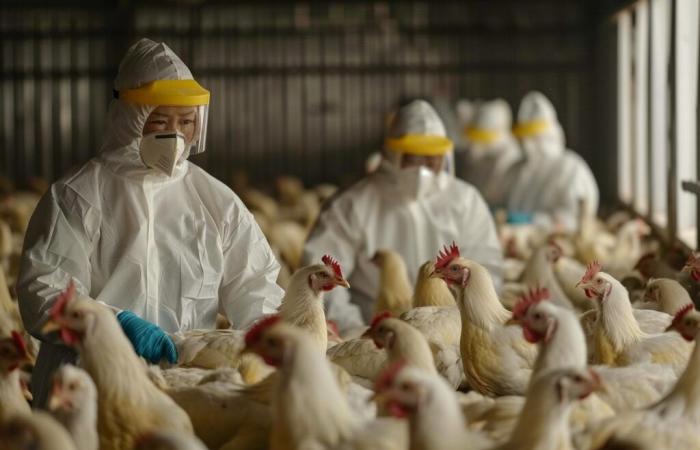Study finds many human bird flu infections have gone unnoticed.
Tl;dr
- A recent study reveals that the number of human cases of avian influenza may be underestimated.
- The study suggests testing all workers on infected farms, even without visible symptoms.
- High-risk exposed workers should receive antiviral treatment, even in the absence of symptoms.
An underestimate of human cases of avian flu
The number of human cases of bird flu may be higher than previously thought, according to a recent study. Indeed, the research found that 7% of workers on dairy farms, where cows were infected with the virus, had also contracted it.
This study, published in the weekly report on morbidity and mortality of CDC (Centers for Disease Control and Prevention), was conducted by disease investigators from this American agency, in partnership with the state health departments of Colorado and Michigan.
A call for increased surveillance
The researchers observed that even if these workers contracted the bird flu virus, these numbers were not reflected in official counts. Faced with these findings, the agency recommended that all workers on farms with infected cows be tested, even if they have no visible symptoms.
Do you like our content?
Receive our latest publications every day for free and directly in your inbox
Until now, only workers showing symptoms after exposure to infected cows were recommended for testing. Today, the agency recommends a screening and treatment wider.
Reinforced prevention
Additionally, the agency recommended administration of the antiviral drug Tamiflu to all workers who had high-risk exposure to infected animals, even if they did not wear personal protective equipment (PPE).
Of 115 people tested, eight were found to have antibodies, suggesting they had been infected with bird flu. Only four of them remembered having symptoms, usually very mild, such as red eyes, fever, runny nose, sore throat, sneezing or diarrhea.
A real but underestimated risk
None of the workers wore the recommended PPE. They either cleaned the milking parlor or milked the cows themselves. Only one of them knew that the cows he worked with were infected with the H5N1 virus.
A total of 46 human cases of H5N1 have been reported in the United States this year. However, the workers identified in this new study will not be added to the case count because their infection was not active.






